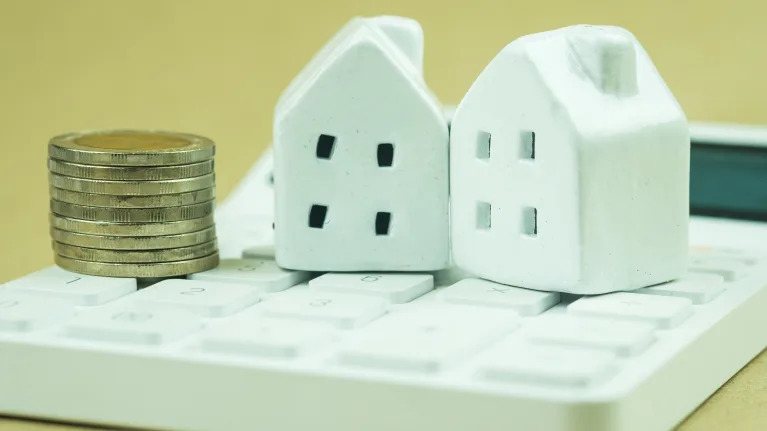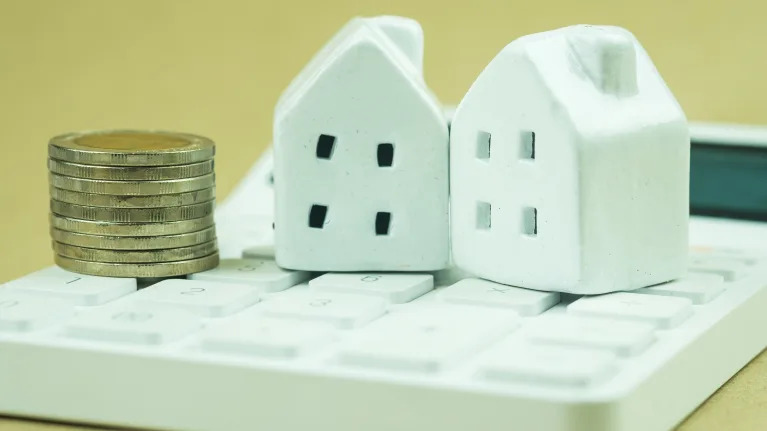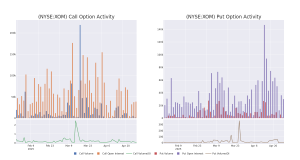
How do you get the lowest mortgage rates? The biggest factors lie in your credit score, your debt levels, and the down payment you can make.
But let’s go beyond that.
As mortgage rates continue to linger in the 6% to 7% range, waiting for interest rates to fall significantly before purchasing a home may not be an option for you. Here are five strategies to get the lowest mortgage rates with the cheapest home loan you can qualify for.
Read more: How to get a mortgage in 2025
Prepaying interest to lower your ongoing mortgage rate, called buying discount points, gains popularity in times of higher interest rates. Well more than half (58.7%) of home buyers in the first three quarters of 2023 purchased discount points to lower their interest, according to HMDA data compiled by the Consumer Financial Protection Bureau.
Buying one point equals 1% of the loan amount and will generally reduce your interest rate by one-quarter of a percentage point. Any number of points can be purchased and applied in fractional amounts too.
However, it’s a good idea to calculate the up-front cost of buying points and compare that with the discount you receive on your long-term interest rate. Other factors to consider in this calculation include how long you expect to live in the home and your down payment.
Lenders sometimes add a point or two to a mortgage proposal to make their offered interest rate appear more enticing. But remember, you’re actually paying for the discount with an up-front fee.
When shopping for a loan, compare loan offers with zero points. Then, you can decide how many points to buy, if any, to lower your interest rate.
Here’s a surprising fact: In a Zillow survey of home buyers over seven months of 2024, about 45% obtained a mortgage rate below 5% — when rates were above 6.5%, like they are now.
How? One-third were successful in negotiating special financing with the home seller or builder. More than one-quarter got a rate buydown from the seller or builder (see below). Nearly a quarter (23%) bought discount points, as we’ve just mentioned.
If mortgage rates are near 6% and you want to get below 5%, you’ll need to buy four to five discount points. (Remember, each point you buy reduces your interest rate by approximately a quarter of a point.)
For example, one point on a $300,000 mortgage would equal $3,000. If you want to purchase five points, you’ll likely pay $15,000. You will want to discuss your point-buying strategy with your lender to ensure it gets your long-term loan rate to your target.
Dig deeper: What are mortgage discount points, and should you pay for them?
Borrowers can lower their mortgage interest rate for the first few years of the loan term with a buydown. Home builders, sellers, and some lenders sometimes offer an interest rate buydown to boost sales. However, it is a rare option among mortgage lenders. Over a one-year period ending in June 2023, only a dozen nonbank lenders accounted for the vast majority (80%) of buydowns, according to Freddie Mac.
Here are some national mortgage lenders with buydown programs:
For example, a buydown might lower your interest rate from 7% to 6.5% for two years. It can be a good deal if the company offering the buydown isn’t making it up with fees somewhere else.
While you get a short-term break on the interest rate, your payments and total interest may actually be higher over the long term. Buying down your interest rate is a strategy that requires running the numbers on the long-term benefits.
If you’re interested in a buydown, compare a mortgage both with and without a buydown. Lenders will qualify you based on the permanent interest rate, not the temporary buydown rate. Finally, be prepared for your monthly payment to rise at the end of the buydown’s discount period.
Learn more: How to buy down your mortgage interest rate
A mortgage product that increases in popularity whenever rates begin to rise is back: the adjustable-rate mortgage.
ARMs have a fixed interest rate for an introductory period, often three to 10 years, and then the rate changes regularly, usually once or twice a year. Tips when shopping for an ARM:
-
Look for an introductory rate that is lower than a fixed-rate mortgage.
-
Choose a term you feel comfortable with, perhaps in line with how long you plan to stay in the home.
-
Make sure you budget for possible increases in your monthly payment if the interest rate moves higher after the end of the introductory fixed-rate period.
In the past, it was common to find ARMs with introductory rates well below the prevailing long-term fixed interest rate. These days, it isn’t a given that an ARM rate will be lower. You’ll have to shop diligently — and bravely negotiate.
Dig deeper: Adjustable-rate vs. fixed-rate mortgage — Which should you choose?
Are you looking for an interest rate that never changes and allows you to build home equity faster? Consider a shorter-term loan. Mortgages with 20- or 15-year fixed terms, as opposed to the traditional 30-year term, typically come with lower interest rates.
However, since the term is shorter, monthly payments tend to be higher.
Learn more: 15-year vs. 30-year mortgage — How to decide which is better
An assumable mortgage allows you to take over the remaining payments of an existing home loan. You would likely make a lump sum payment to the current owner to cover the value of any equity or for a profit. That would require you to have the needed cash on hand or perhaps get a loan.
As tempting as it might be to pick up a low-interest-rate assumable loan, most conventional mortgages aren’t eligible. That means you would need to find a seller with an FHA, VA, or USDA loan.
Dive deeper: What is an assumable mortgage, and how do you get one?
Since mortgage rates are constantly changing, and each lender’s rate varies, the lowest mortgage rate you can earn requires some research. You will want to know your credit score, debt-to-income ratio, and the amount of your down payment.
With that information, you can begin contacting lenders. Knowing generally where you want to buy a house and how much it will cost, you can gather rate estimates based on your creditworthiness.
Once you have two or three contenders, you can apply for preapproval with each and get a more exact mortgage rate.
Learn more: Here are the best mortgage lenders right now
Current home loan interest rates are above 6%. Almost three-quarters (73.3%) of existing homeowners have a mortgage rate below 5%, and over half (55.2%) have a rate below 4%, according to Redfin. So, refinancing is not an option for many homeowners right now.
However, owning a home is a long-term commitment, and mortgage rates are very cyclical. Just because mortgage rates are above historic lows doesn’t mean a refinancing opportunity will not present itself some years down the road.
After you move in, keep an eye on interest rates. Look for a dip of about 1% to 2% below your current mortgage rate before refinancing. Just remember — there will be refinance closing costs, and you need to decide if your goal is to lower your monthly payment or to pay off your home sooner.
Dig deeper: 6 times when it makes sense to refinance your mortgage loan
The lowest mortgage rate ever on a 30-year loan was 2.65% in January 2021, according to Freddie Mac. It takes dramatic and systemic financial stress to shock mortgage rates to such a low level. COVID-19 was just that. Some 15 months later, mortgage rates were up to 5%.
Never say never — but it’s unlikely that mortgage rates will go back down to 3%. A drastic event (like the COVID-19 pandemic) would have to occur again for rates to drop this low.
VA loans usually have the lowest mortgage rates, especially 15-year VA loans, because shorter terms come with lower rates than longer terms.
This article was edited by Laura Grace Tarpley.


